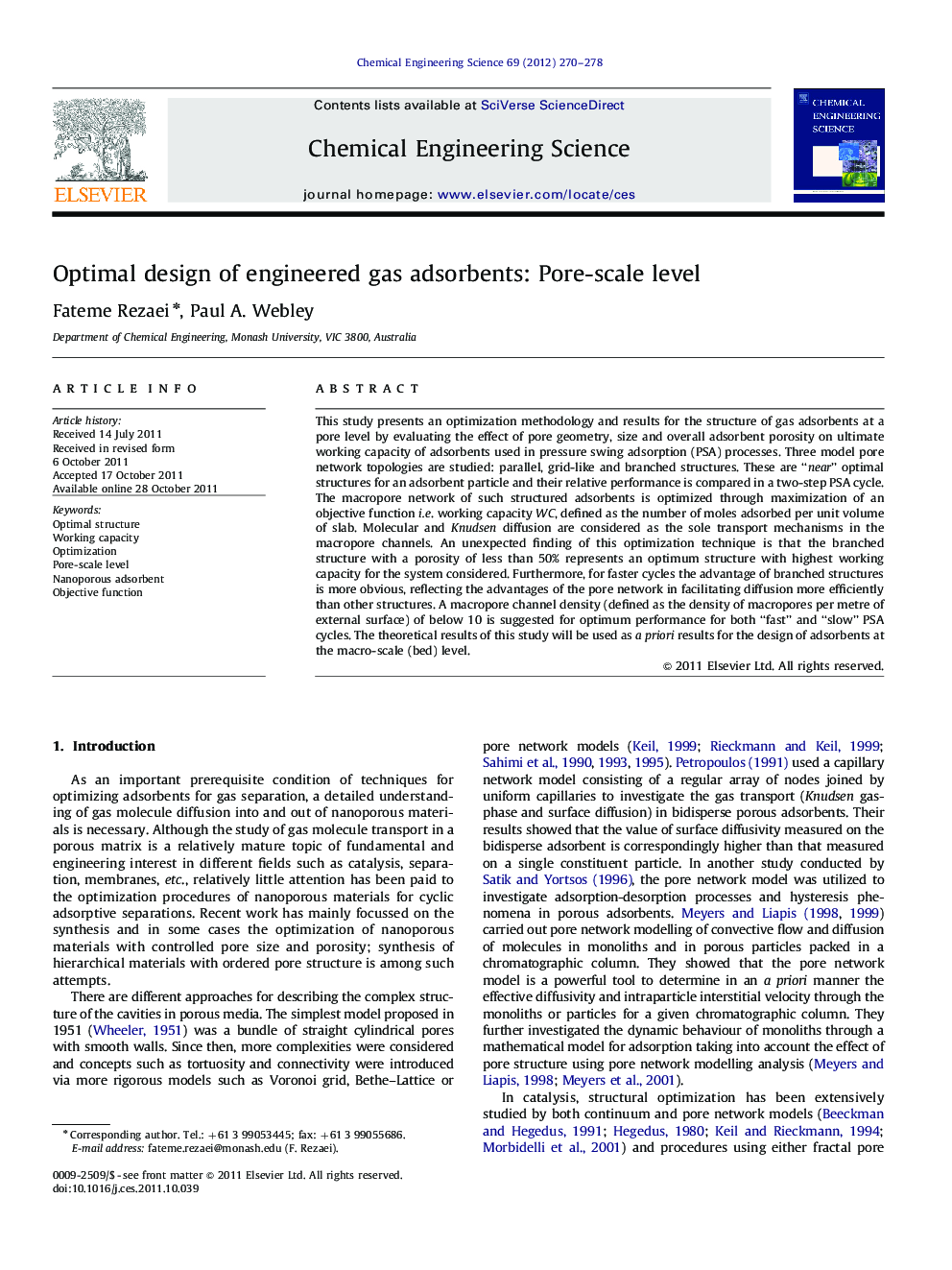| Article ID | Journal | Published Year | Pages | File Type |
|---|---|---|---|---|
| 155900 | Chemical Engineering Science | 2012 | 9 Pages |
This study presents an optimization methodology and results for the structure of gas adsorbents at a pore level by evaluating the effect of pore geometry, size and overall adsorbent porosity on ultimate working capacity of adsorbents used in pressure swing adsorption (PSA) processes. Three model pore network topologies are studied: parallel, grid-like and branched structures. These are “near” optimal structures for an adsorbent particle and their relative performance is compared in a two-step PSA cycle. The macropore network of such structured adsorbents is optimized through maximization of an objective function i.e. working capacity WC, defined as the number of moles adsorbed per unit volume of slab. Molecular and Knudsen diffusion are considered as the sole transport mechanisms in the macropore channels. An unexpected finding of this optimization technique is that the branched structure with a porosity of less than 50% represents an optimum structure with highest working capacity for the system considered. Furthermore, for faster cycles the advantage of branched structures is more obvious, reflecting the advantages of the pore network in facilitating diffusion more efficiently than other structures. A macropore channel density (defined as the density of macropores per metre of external surface) of below 10 is suggested for optimum performance for both “fast” and “slow” PSA cycles. The theoretical results of this study will be used as a priori results for the design of adsorbents at the macro-scale (bed) level.
► Branched structure with a porosity of less than 50% represents an optimum structure. ► For faster PSA cycles the advantage of branched structures is more obvious. ► A macropore channel density of below 10 is suggested for optimum performance for both “fast” and “slow” PSA cycles.
